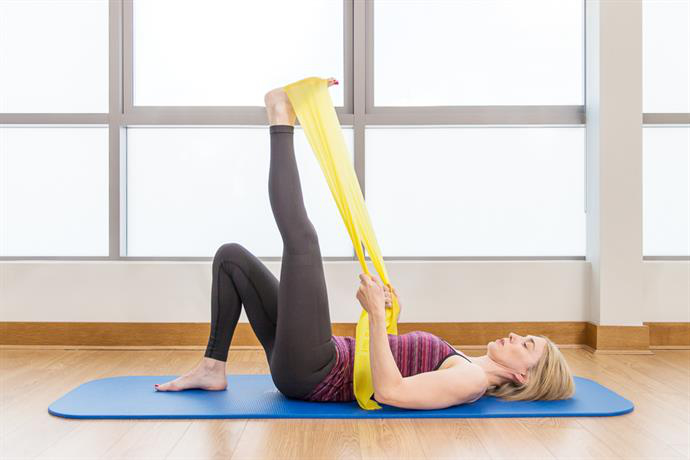by Jeannie Di Bon, April 5th, 2016

Recently there has been a spate of articles written about the good, the bad and the ugly of stretching. I’ve shared a few on the Create Facebook page. So here’s my answer to the “should I stretch” question. Ready?
NO!
Ok, let me clarify. There is a difference between ‘static stretching’ – i.e. where you hold a stretch for an amount of time and repeat several times in order to attempt to force a change in that tissue and ‘dynamic stretching’ where you move in and out of end-range stretching but without holding.
When I teach, I only ever recommend the dynamic stretching. I believe it is more natural and beneficial for the tissue than being forced into a stretch the body may have its own very good reasons for not wanting to take.
The classic static hamstring stretch can be performed in a variety of ways. Does it work? I don’t think so, otherwise why would you have to keep stretching them? Same goes for your quads, glutes and whatever else you feel is so tight it needs stretching. How about we ask: why does it ‘feel’ so tight? Is it tight, really? Are you sure it’s the hamstrings that are the ‘tight’ ones – could it be because the other surrounding structures are influencing or pulling on them? Everything is connected so you cannot really just have one muscle that decides to tighten on its own. Also, if we continue to stretch and stretch, what are we doing to the elastic recoil the body needs? I used to have one of those slinky toys as a child, the coil that could walk downstairs. You may have seen them. Very cool to watch. That is until you decide to pull it about, stretch it and it loses its shape and elasticity that gave it the bounce to walk down the stairs. Our tissue is no different – pull it too much and you are going to affect its natural recoil ability. So maybe the hamstrings feel tight, but in fact they are hurting because they are stretched beyond their natural tension. Maybe they are desperately trying to hold everything together but we keep stretching them thinking it’s what they need.
From a sport and exercise point of view, static stretching does little or nothing to prevent injury. (Reynolds 2008).
So why is dynamic stretching any better for us? Well, first look at nature, how animals move naturally. Have you ever seen an animal hold a static stretch? Does your dog stretch its hamstrings before you take it for a walk? Probably not! So why do we feel the need? What animals will do is pandiculate. This is when they wake up, curve downwards to open the back, legs and belly in a full body yawn. It always looks so great and refreshing too. There are 3 things taking place – a voluntary muscle contraction, a slow lengthening and complete relaxation of the muscle. It almosts resets the body, awakens the sensory nervous system.
Muscles learn through movement. Muscles need to learn to release tension and then relax again. Holding a static stretch to the point of pain is not going to teach them this. It will teach them to hold on for dear life in a state of heightened tension. The exact opposite of what you are trying to achieve.
Why not try a variety of dynamic stretching movements in your routine, move in and out of the stretch rather than holding it. It has been found to increase power, flexibility and range of motion (Reynolds 2008). Think pandiculate! Think natural, global movements and enjoy them! Moving the body should feel good, not a painful thing we have to do.
No Comments